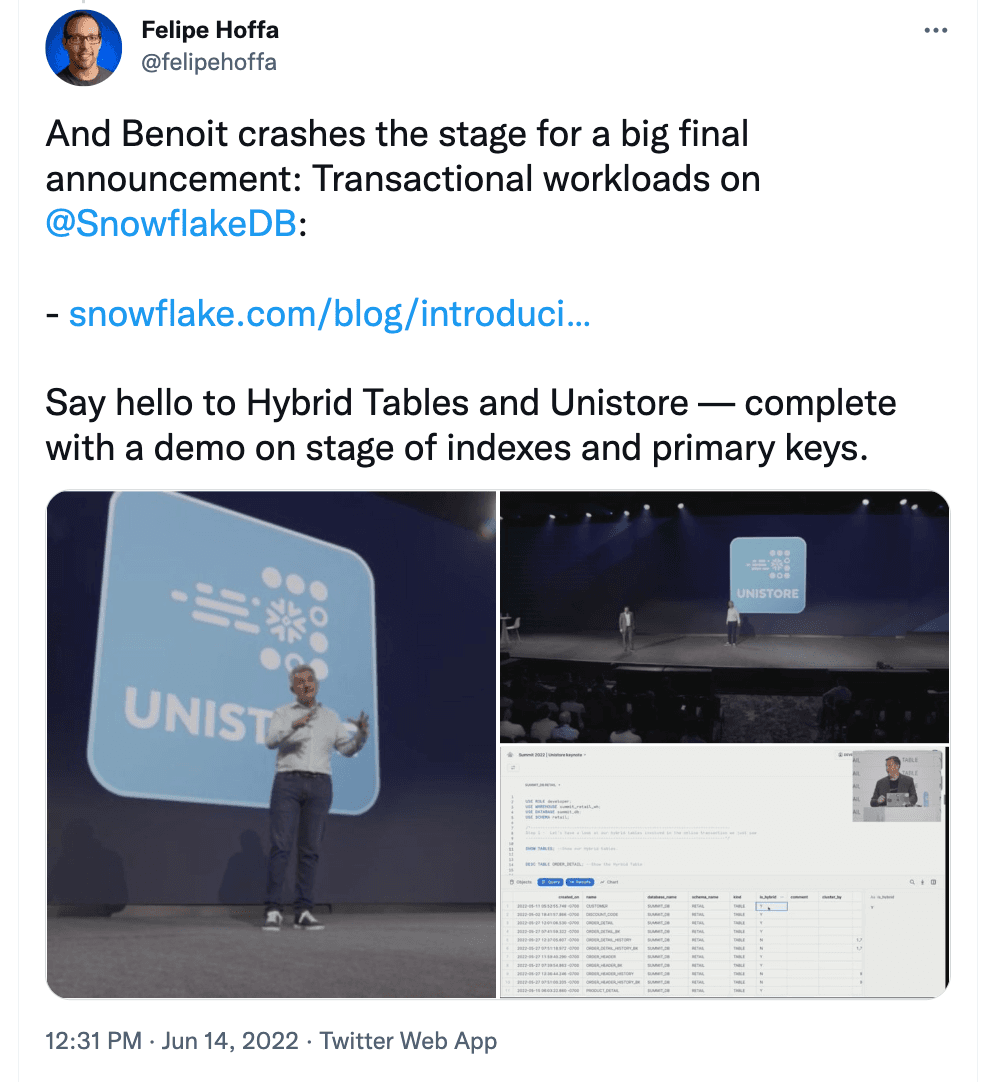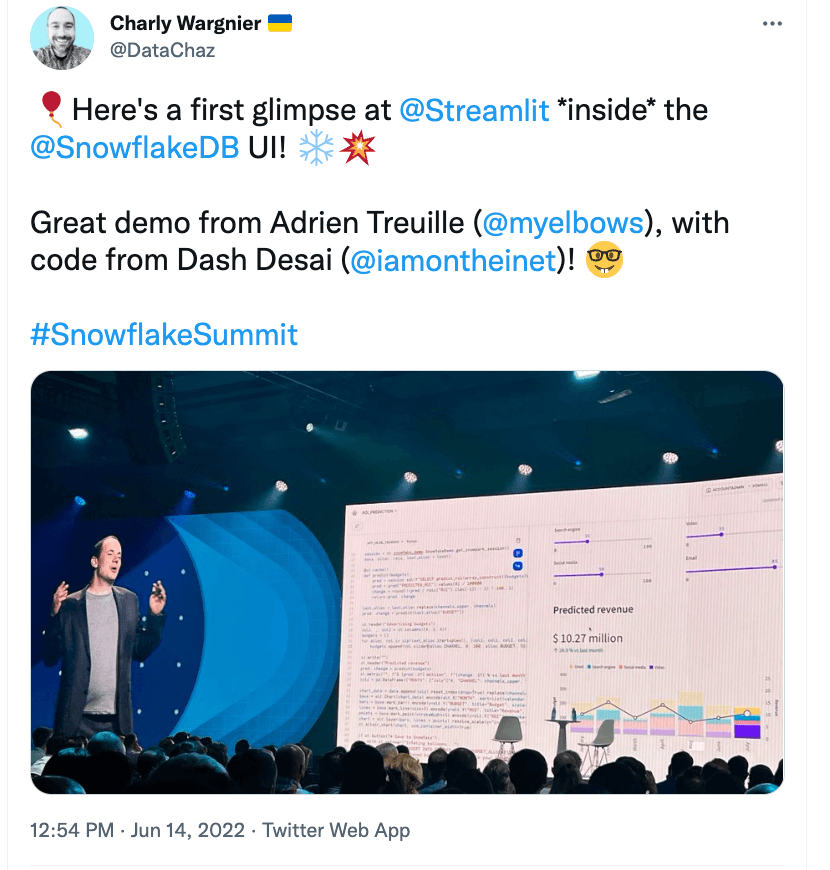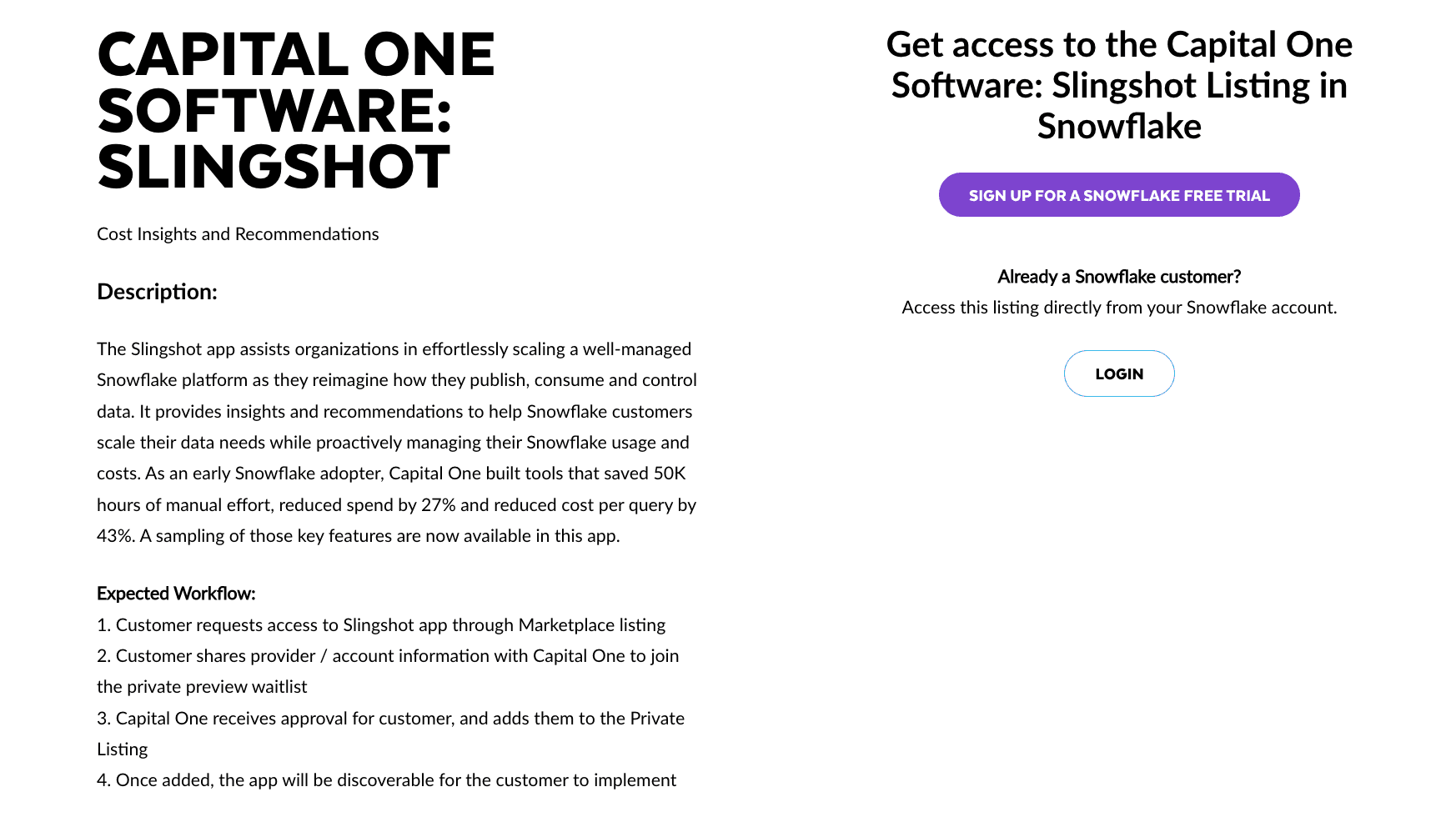After the four-day Snowflake Summit in Las Vegas last week, the hot takes and the positive Covid tests are rolling in.
While industry pundits and players like Mode’s Benn Stancil and Monte Carlo’s Matt Sulkis are delivering terrific comprehensive analyses of the event, we’re going to review some of the basics that you may have missed.
After all, if there’s one thing everyone can agree on: there was way too much information to take in, too many booths to visit, and too many talks to attend – not to mention the endless invites to private events.

Amidst the pitches, presentations, and slot-playing, there were some major technical announcements by Snowflake. Below is a cheat sheet diving into what we consider the highlights.
We all know the big picture about Snowflake’s vision: it no longer wants to be seen or described as a “warehouse,” but rather as a “Data Cloud” with a rich offering of solutions to help companies make the most of their data.
We’ll touch on three announcements that fleshed out key elements of that vision: Unistore, Snowpark for Python, and the Native Application Framework.
The Unistore: Bringing Transactional & Analytical Data Together
You know an announcement is a big deal when it comes straight from one of Snowflake’s founders – in this case, Snowflake Co-founder and President of Products Benoît Dageville.

The goal of Unistore is to eliminate one of the most common data silos that companies deal with, transactional data and analytics data.
Generally, companies store transactional data in traditional databases which are optimized for transactions. Typically these databases have a row-based table structure that’s designed for fast inserts and updates.
Data warehouses, on the other hand, are optimized to store and process data intended for analytics. The underlying table structure in the warehouse is column-based which allows for more efficient reading and writing of data to and from storage – with quick returns on queries.
Unistore, quite simply, enables both types of data to be stored in the same place, with each type maintaining its native advantages – giving Snowflake users the ability to run real-time analytical queries on transactional data.
Unistore also opens the possibility for companies to do more with their transactional data, such as build a transactional business application directly on the warehouse.
Unistore is powered by what Snowflake is calling “hybrid tables,” which offer the fast, single-row operations of traditional databases, and the top-notch analytical query performance you’re used to in a warehouse. If you want a deep dive into how Snowflake pulled this off, I recommend Snowflake Unistore and Hybrid Tables Explained on the blog of John Ryan, a Snowflake Solution Architect.
Snowpark for Python: Latest Step in Snowflake’s Embrace of Python
For those of us who live and breathe in the SQL-centric layer of the modern data stack, we sometimes momentarily forget about the importance of Python. It’s arguably the most popular coding language in the world, and the tool for data science and machine learning.
Snowflake has been steadily building synergy with Python, including last year’s announcement of a partnership with Python creator Anaconda and the launch of a Python Dataframe API.
In Vegas, Snowflake announced “Snowpark for Python,” which brings native support for Python to Snowflake’s developer platform. The goal is to make Snowflake more accessible to data scientists, machine learning engineers, and developers – empowering them to leverage not just the Python language, but the entire Python ecosystem of libraries, frameworks, and tools.
Snowflake is also touting the security and governance advantages of enabling data science and machine learning workloads to take place directly in a client’s Data Cloud.
There’s one more element of the Snowflake/Python integration that’s important to stay abreast of: Streamlit, the start-up that Snowflake acquired in March.
Streamlit is an open-source Python-based web application framework designed to bridge the communication and knowledge gaps that often exist between data science/machine learning teams and business teams. Streamlit achieves this by enabling data scientists and machine learning engineers to easily build interactive applications that share and communicate their findings.
Snowflake has not yet built a full Streamlit integration into the Data Cloud – but in Vegas, they provided updates on their work towards doing so, with a demo by Streamlit co-founder Adrien Treuille.

Native Application Framework: Snowflake’s “App Store”
Snowflake introduced the “Native Application Framework,” which will allow developers to build and monetize apps in their Snowflake instances, while end consumers of those apps can install and run them in their Snowflake instances. The goal of this new framework is to save the time and effort it takes to move data to applications.
The benefits will go beyond the initial savings of time and effort. Running applications where the data is located boosts runtime performance and creates a highly secure working environment (these applications also benefit from Snowflake’s security and governance framework).
The other major benefit of the Native Application Framework is monetization. Developers can sell their apps to Snowflake’s 6k+ customers directly, by publishing them on the Snowflake Marketplace. The Marketplace launched in 2020 as a data-exchange platform, allowing Snowflake customers to buy and sell data sets amongst each other. But now, it’s evolving into more than just a data vending platform – with many commentators likening it to Apple’s and Google’s app stores.
If you’re like me, you’re wondering – what types of apps are we talking about here? The first things that come to mind are the aforementioned Streamlit apps, and apps based on transactional data that are now possible thanks to Unistore.
Both of those are definitely part of what Snowflake has in mind for the Native Application Framework. But, for now, Snowflake is thinking about the fact that more than 400 of its customers have already built their own apps on top of the warehouse. One of the most high-profile examples so far is Capital One’s “Slingshot,” which was built to streamline Snowflake provisioning processes.
Over time, Slingshot evolved into a solution that offers multiple additional advantages, such as managing Snowflake costs and automating data governance. Capital One thinks its app is so good that it’s worth selling to other Snowflake users, and Snowflake agrees: Slingshot became one of the first apps available for purchase on the Marketplace. (Side note: it looks pretty cool – learn more about it out here.)

Snowflake Data Cloud: It’s Only the Beginning
It’s important to keep in mind that all of these new features – Unistore, Snowpark for Python, and the Native Application Framework – are very much in the early days. Some of them are only available in beta to certain Snowflake users (what Snowflake calls “Private Preview”). To what degree these features become popular, or become differentiators between Snowflake and its competitors, remains to be seen… We’ll be keeping an eye on these over the next twelve months, in the countdown to Summit 2023.
For us here at Hightouch, of course, there's one development that we're most excited about: the fact that Hightouch officially launched as the first Data Activation platform available through Snowflake Partner Connect. With data activation, you can sync data from Snowflake directly to the tools your business teams rely on. In just a few clicks, you can send your enriched data from the Snowflake Data Cloud to Salesforce or other CRMS, marketing platforms, customer success tools, and more.
Do you think we should have included one of the (many) other Snowflake technical announcements in our round-up? If so, drop me a note and I’ll add it in or Tweet about it! You can reach me at mary@hightouch.com, or find me on Twitter @MaryMacCarthy.















